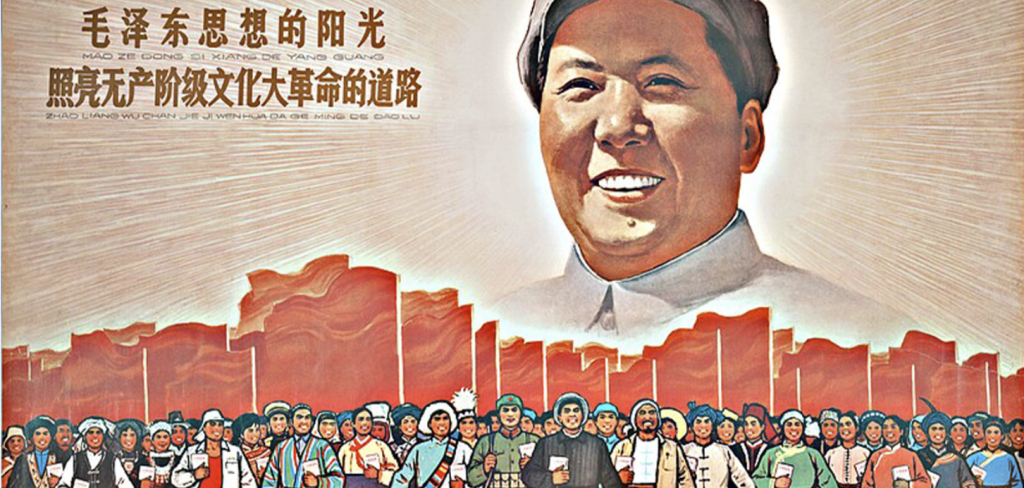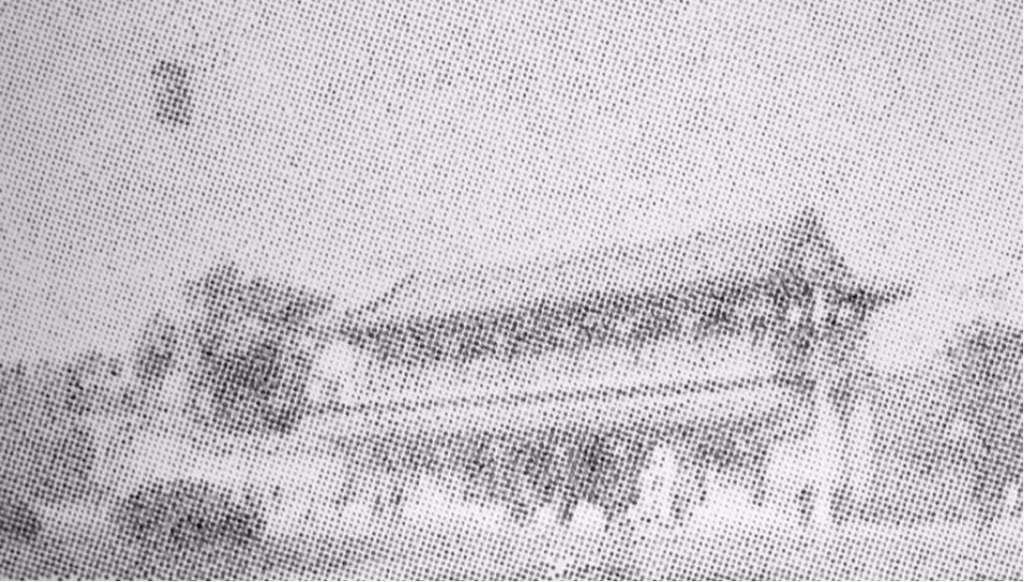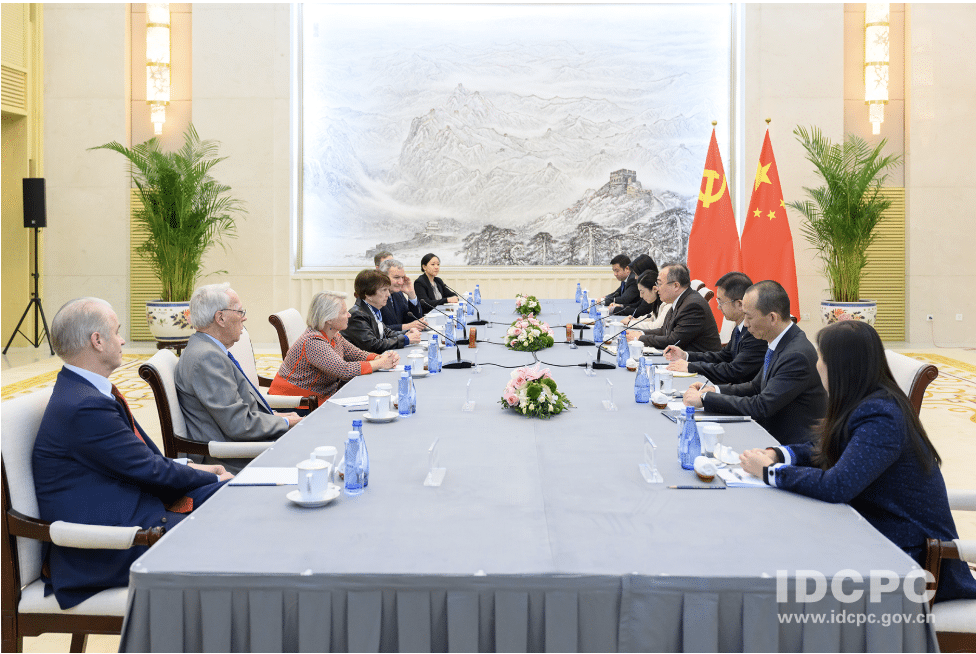China Finally Its Centralizes Space, Cyber, Information Forces
The changes will give China more confidence in its ability to deter and compel adversaries.
On December 31, China’s Central Military Commission (CMC) announced its most recent and substantial military reform yet. The change, which created a separate Army leadership organ, a Rocket Force,and a “Strategic Support Force,” amounts to the culmination of a year of monumental change for China’s national security infrastructure. In many ways the move came as no surprise to long-time China watchers and analysts. PLA scholars have been calling for a separate Army leadership organization for years. The Rocket Force (PLARF) is essentially a renamed 2nd Artillery Corps (PLASAF), upgraded to be equal to the other services and was also a widely expected move, intended as both a strategic signal to the West and as force development measure to increase China’s intermediate and long-range missile capability. Both measures are clear-cut and expected. The odd one out is the Strategic Support Force (SSF).
Information on the newly created independent branch is scarce, but semi-official sources indicate that it will comprise space, cyber, and electronic warfare forces. More interestingly, these sources suggest that it will integrate and consolidate intelligence, communications, and technical reconnaissance with cyber warfare and electronic warfare to create an information dominance force.
Rumors and calls for large-scale military reform have been batted around for years but were never given any serious thought until Xi Jinping took power in 2012. In the years following Xi’s ascension, the party made limited changes to the military, instead focusing on updating China’s strategic guidelines and purging the military of corruption. That changed in 2015 when Xi announced a series of unprecedented organizational reforms, which would reorganize China’s leadership organs, the four general departments (staff, logistics, equipment, and political), transform China’s antiquated military-region system into five joint “theaters” or battlezones, and change its antiquated procurement structure.
When introducing the SSF on December 31, Xi Jinping was fairly vague, giving no concrete detail as to what role it will actually play, simply stating that it is a “new-type combat force to maintain national security and an important growth point of the PLA’s combat capabilities.” Yang Yujun, the spokesman for the Ministry of National Defense (MND), was even more circumspect, simply stating that the SSF will play a “strategic, fundamental, and supportive” role to China’s military.
The name of the force betrays nothing as to its mission, the official PLA dictionary entry for “strategic support” gives no added value, and the MND’s spokesman’s description was comically self-evident. Chinese “bureaucratese” aside, Xi’s description of the force at least offers some insight – “new-type forces” is often a by-word for units that use advanced technology and are heavily “informatized.”
The only quasi-official commentary we do have, from the state-media associated Global Times, is in line with Xi’s description, at least. According to these military experts, the Strategic Support Force will consist of space, cyber, and electronic warfare units and will be critical to China’s ability to maintain information dominance in wartime. The experts suggest that the Strategic Support Force will be responsible for building a force to ensure military use of the space, cyber, and electronic domains and to provide support for the kind of integrated joint operations mandated in the PLA’s new reform guidance and 2015 defense white paper.
Song Zhongping, a former Second Artillery Corps Officer and military theorist, describes the SSF as a fifth service, stating that it will comprise space, cyber, and electronic warfare units. The cyber force would consist of hackers focusing on attack and defense, the space forces would “focus on reconnaissance and navigation satellites,” and the electronic warfare force would focus on “jamming and disrupting enemy radar and communications.” According to Song, this would allow the PLA to “meet the challenges of not only traditional warfare but also of new warfare centered on new technology.”
Yin Zhuo, a retired PLA Navy (PLAN) admiral, suggests that the SSF’s mission will include tracking targets, reconnaissance, targeting information, managing space-based navigation systems, and space reconnaissance. Song Zhongping suggests that technical reconnaissance, intelligence, communications, etc. – basically C4ISR capability – will also form a part of the SSF, as these disciplines “cannot be separated from information warfare.”
This commentary should be taken somewhat seriously. It appeared in state-associated media, and the articles themselves appeared and remain on the Ministry of Defense’s website. While not an official endorsement, the media environment surrounding military reforms has not been hospitable to erroneous rumors. The fact that these articles have been allowed to persist may be an indication that if not wholly correct they are in the ballpark. They do align with the little detail that Xi did give and solve key problems in China’s military.
If this thinking is correct, then, what role would the SSF play in China’s defense establishment?
Strategic Deterrent Triad
First and foremost, the SSF will most form the space and cyber legs of China’s new strategic deterrent “triad” of nuclear, space, and cyber forces. In 2013, Science of Strategy noted these as “major domains.” Space and cyber domains, in particular, are referred to as “strategic pillars.” The more authoritative 2015 defense white paper makes this distinction official, stating that China will develop forces in these “critical domains” of nuclear, space, and cyber. Establishing the Rocket Force for nuclear and the Strategic Support Forces for space and cyber dovetails with China’s evolving national security strategy, and gives the CMC a clear line of control towards these forces, which will possess China’s most powerful military weapons.
The Strategic Support Force is intended strike at the vulnerable areas of modern “high-tech” militaries: their military networks. Long-range, complex military networks are the foundation of network-centric warfare and precision guided munitions, the core components of modern warfare. Formed by space and cyber infrastructure that are interconnected through electronic signals – or the electromagnetic domain, these military networks depend on control of the three spaces in which the SSF is intended to operate. Denial of space, the electromagnetic spectrum, or cyber networks each present powerful obstacles to any military’s ability to project power, execute long-range strike, or command forces. The denial of all three together, however, would yield a net effect amounting to the total domination of information on the battlefield. In this regard, space, cyber, and the electromagnetic domain constitute an “information center of gravity” (CoG) of modern warfare. China sees the United States as particularly vulnerable if this CoG is denied, believing that the U.S. military is over-reliant on its global C4ISR infrastructure and its military networks are exposed through its sustained, expeditionary deployments. Some Chinese researchers have even referred to the United States military as a “no satellites, no fight” military. The Strategic Support Force is intended to build a capability to fight and win in these domains as part of a grander strategy of information denial and strategic deterrence.
Integration of these forces also allows for more mature “second strike” capability after the outbreak of conflict. As I have mentioned elsewhere, the cyber domain is effectively closed in the aftermath of a “first strike” cyber-attack. Traditional vectors for cyber-attack, like the open Internet, will close as each country elects to cut off their access to the wider world as a form of self-protection. The ability to leverage space-delivered cyber-attack, or “smart jamming” will be key to continuing an information operations attack against enemy targets. Second, targeting the wireless links between networks will also be key, and that requires investment and development in electronic warfare capabilities.
The SSF will be key in centralizing and coordinating China’s myriad military cyber efforts. More than any other entity, the PLA cyber mission has been plagued by “multi-headedness” (多头注意), with competing interests and overlapping missions. The CMC has most likely centralized cyber espionage, attack, and defense into one cyber force under the SSF. This is a measure intended to increase synergy between espionage and attack units, whose mutual access can be used for strategic subversion – of electric grids or financial systems, for instance – and mutual tools can be used for better cyber tradecraft. Both missions can benefit from sharing best practices, tools, personnel, talent, and tradecraft. Deconflicting cyber operations between cyber missions is also essential to making China’s cyber force more effective and lethal, and to fundamentally reducing the discovery of any intrusion or reconnaissance.
The SSF may also provide an additional benefit by “cleaning up” the PLA’s cyber forces. According to Western media, the PLA has been one of the major perpetrators of cyber-crimes and cyber theft emanating from within China. Whether these efforts are state-directed or not, the continuous revelations of their hacking efforts have proven to be a political liability; this move will streamline command and control and transparency, and give the CMC greater political control over the units that do this sort of work. Notwithstanding this, the move may allow for greater oversight and coordination by reducing the bureaucratic distance between military leadership, different commands, and cyber operators themselves. This has the potential to tighten up tactics, techniques, and procedures, limit moonlighting, and result in a more professional cyber force.
The SSF may be integrating the PLA’s intelligence apparatus with its communications, cyber force, and space forces, thereby merging strategic C4ISR units into one force. China has consistently indicated that a major limiting factor to expansion of state interests and military combat effectiveness has been the lack of a robust global intelligence infrastructure like that of the United States’, one which China also sees as key to its current military strategy of “local wars under informatized conditions.” Corralling and consolidating informatization forces, intelligence units, and space ISR units will bridge this key technology gap by building a force capable to field, support, and defend an expansive C4ISR system. The PLA believes that this will primarily allow for greater control of the information battlespace on the friendly side, and greater defense against attack. Moreover, the expanded intelligence enterprise will fundamentally enable expeditionary operations far afield from China’s home territory.
Finally, the SSF is also likely a key move in weakening the influence of the Army. Before the recent reforms, PLA Army units existed at two echelons: Regional “operational” units based under the former military regions, and “strategic” national-level units that handled broader topics like space, cyber, and electronic warfare. These units constitute some of China’s most advanced “new-type” capabilities: information management, space forces, cyber espionage, cyber-attack, advanced electronic warfare, and intelligence, reconnaissance, and surveillance. These national units operated under the previous Army headquarters, the General Staff Department and General Armament Department, which also doubled as a de facto joint headquarters for operations and equipment issues, respectively.
Reducing Army Influence
In the same ceremony that announced the PLARF and SSF, the CMC established the People’s Liberation Army Land Forces leadership organization, which effectively abolished the previous Army headquarters. One of the major objectives of reform has been to reduce the power and influence of the Army, which has dominated the PLA since its creation in 1949. Although it may seem counterintuitive, a key step in doing that is to create a separate Army headquarters distinct from a joint headquarters.
However, in creating a new Army headquarters, the Army was split between its two echelons: CMC was essentially faced with handing over strategic capabilities to the newly formed Army headquarters – which runs counter to reducing its power – or keep the units directly under the CMC. The move left the strategic-level units as orphans without an administrative, support, or command organization. Classifying these units as a new “independent branch” gives them leadership and an administrative organ run directly by the CMC and solves this problem. The Army likely retains control over the lower-echelon units like standard combat arms divisions. The move aligns with the CMC’s intention to refocus the Army towards land defense and would also be consistent with new strategic guidelines, which besides seeking to limit the power and influence of the Army, also give greater development to the “new-type forces” strategic units represent, and simplify command and control.
The People’s Liberation Army is taking an approach quite different from that of the U.S. military, in which each service builds its information warfare forces and then integrates them at the joint combatant commands. Instead, the PLA is creating an entire military service branch dedicated to information warfare, comprising space, cyber, and electronic warfare units that will form a core around which the other services will operate in the information domain. These forces are intended to integrate with the other service branches under joint commands within the PLA’s newly created Military Theaters, or “Battlezones,” the PLA’s version of the U.S. military’s regional combatant commands.
Under the PLA’s new strategic guidelines, the services are responsible for building capabilities, not unlike the U.S. military mandate to “man, train, and equip.” Creating a separate service for information warfare should be seen as a top-down force-building measure, intended to give the Central Military Commission a much more powerful hand to shape capabilities in the space, cyber, and electronic warfare domains. According to the reform guidelines, the training and recruitment process for personnel and the procurement process for equipment will be subject to greater transparency and oversight, and will be more heavily directed by the CMC.
Overall, these changes will give China a growing confidence in its ability to deter and compel adversaries, which may lead to a more aggressive stance overall. A core limiting factor to China’s expansion of state interests has been its underdeveloped information support infrastructure and confidence in its ability to provide a credible conventional deterrent against an advanced military fighting force, such as that of the United States. The Strategic Support Force seems to be squarely aimed at addressing these two issues, and its establishment should be viewed as a concrete indication of China’s commitment to expanding its global influence and desire to challenge – and fight, if necessary – the global status quo when it is a threat to China’s rising influence and national interests.
By JOHN COSTELLO JAN 20, 2016 in The Diplomat
http://thediplomat.com/2016/01/china-finally-its-centralizes-space-cyber-information-forces/








